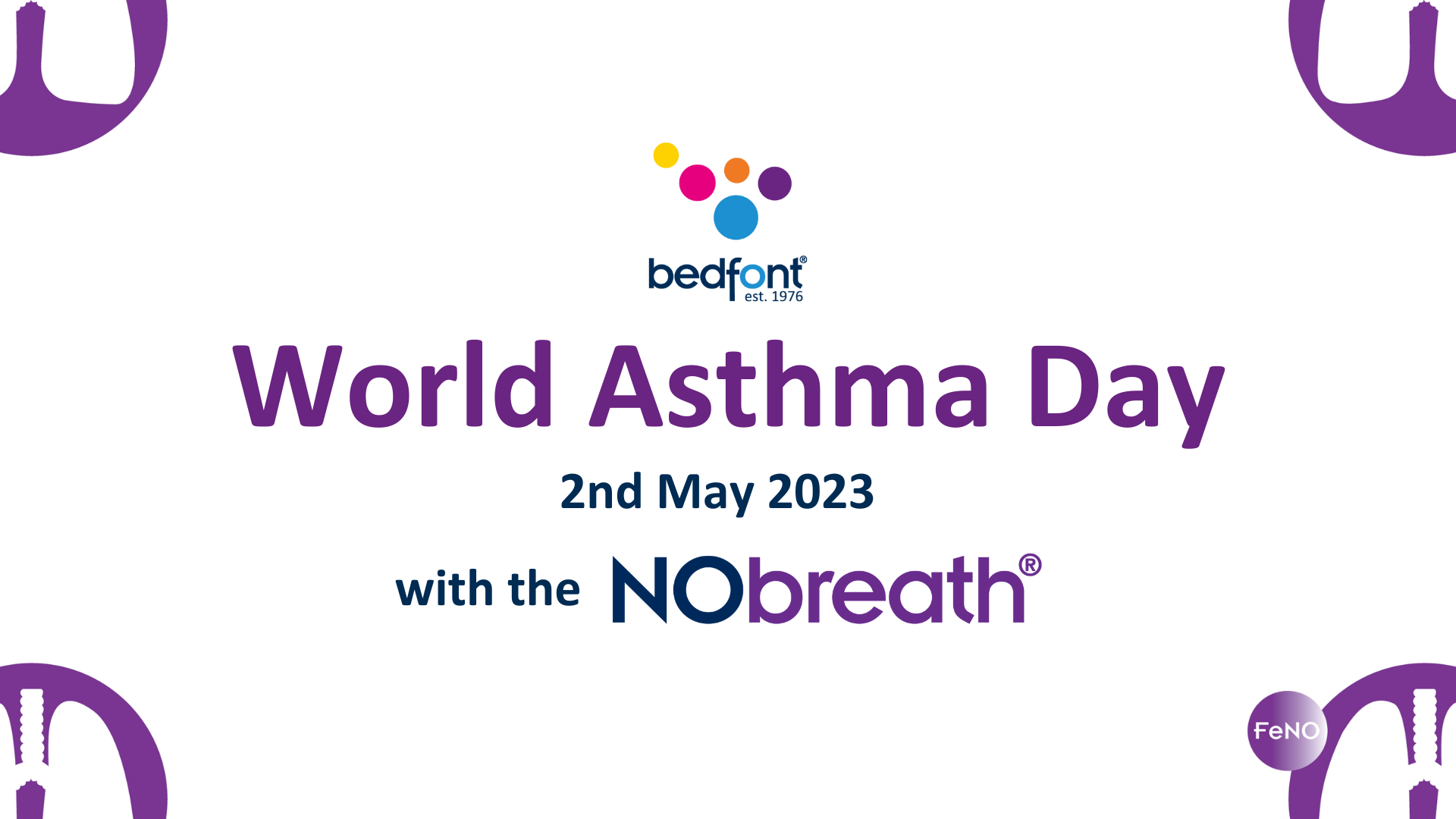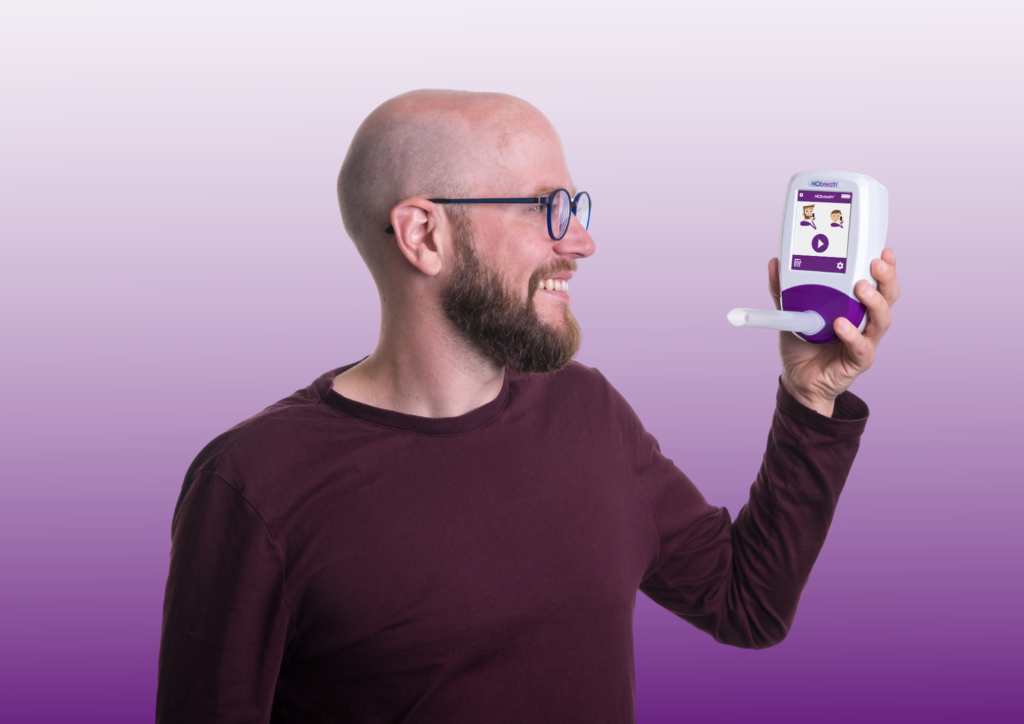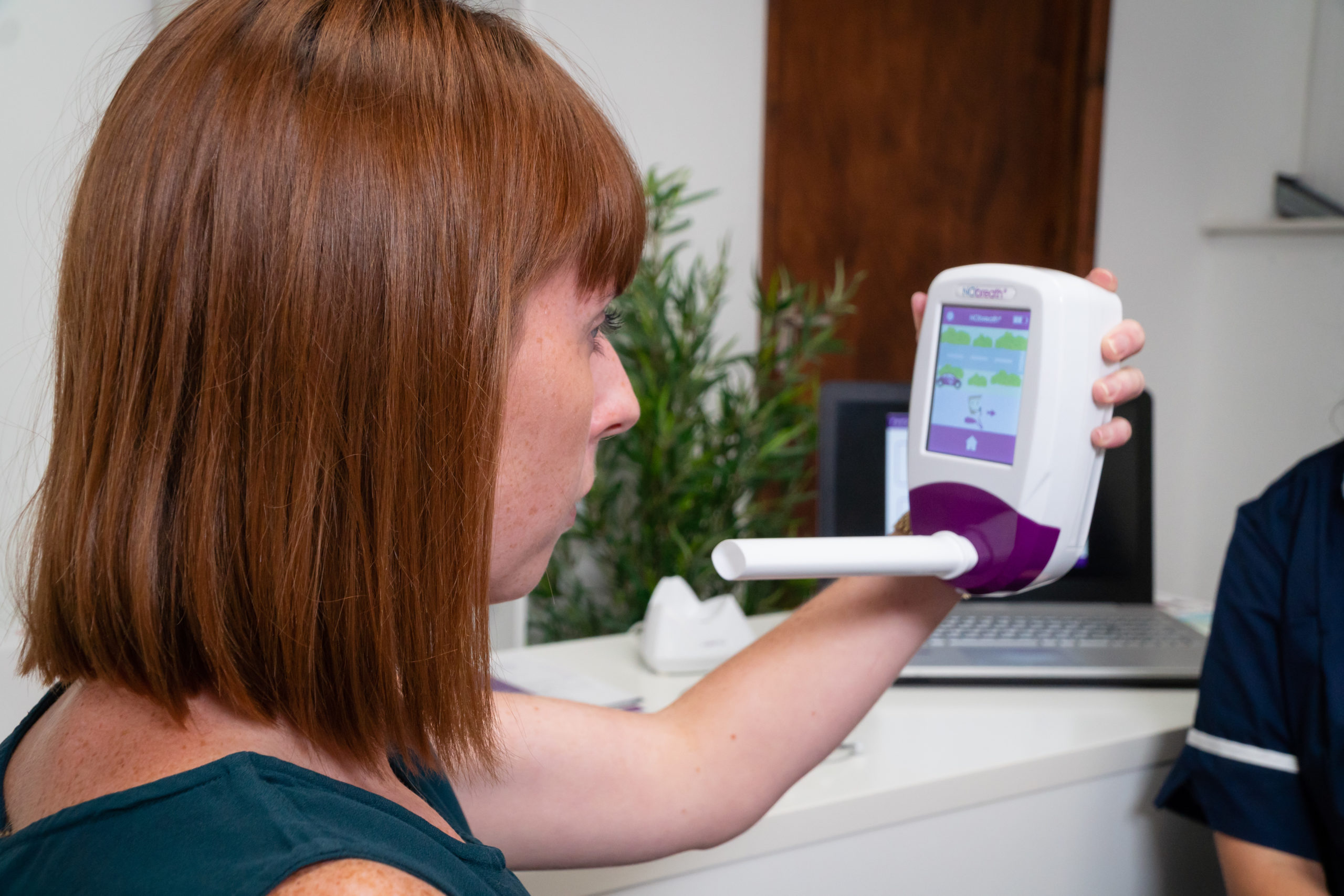The National FeNO Programme has recently released its Impact Report, promoting how their programme has improved access to fractional exhaled nitric oxide (FeNO) testing across the National Health Service (NHS) in England. The programme ran from April 2021 to March 2023.
The National FeNO Programme was part of a wider programme by the Accelerated Access Collaborative’s (AAC)’s Rapid Uptake Products Programme. The AAC brings together the NHS, patients, industry, government and more, with the goal of removing barriers to innovative and revolutionary new treatments and technology1. In England, the AAC has helped encourage the adoption of FeNO, with the help of the AHSN Network which delivered the programme as part of its commission from the NHS England Innovation Research and Life Sciences (IRLS) team1. The National FeNO Programme included two FeNO devices appraised by NICE, with NObreath®, manufactured by Bedfont® Scientific Ltd., being one of them.
What is FeNO?
FeNO is very minuscule particles of nitric oxide (NO), measured in parts per billion (ppb). NO is naturally produced by your body to help combat inflammation and when your airway is inflamed, NO is produced in the lungs and exhaled on the breath. The production of NO is often found to be higher in inflammatory conditions such as asthma and therefore FeNO monitoring can be used for the detection and management of such conditions.
Programme impact on FeNO device and testing
Over the duration of the programme, 1,244 new FeNO devices are now available in primary care. Notably, it is estimated that 53% of Primary Care Networks (PCNs) in England now have access to FeNO testing2, thanks to the National FeNO Programme. Yhe AAC and Office for Life Sciences (OLS), funded 33 national FeNO projects through their Pathway Transformation Fund (PTF), a total of £915,000 was given from the PTF, resulting in the implementation of 118 new FeNO devices.
Programme’s impact on education and funding for FeNO
The AHSN Network has supported training and development for FeNO testing, with two FeNO training modules developed for healthcare professionals. This has resulted in over 4,900 hours of training being delivered. A FeNO implementation toolkit was created as an aid to support the adoption of FeNO testing, and has been viewed over 13,500 times. After training modules were completed, a survey was carried out by 1,047 healthcare professionals enrolled on the FeNO training modules, 91% indicated the training will help in their role.
FeNO programme impact on asthma care for patients in England
During the course of the programme, the report estimates a potential 58,000 new asthmatics in England receiving an asthma diagnosis with the support of FeNO testing. In turn, helping to increase the accuracy and speed of the diagnosis of asthma, thus speeding up access to essential treatments for patients2.
What’s next?
The FeNO programme has now finished, but the incredibly important work around FeNO still continues. NICE, the Scottish Intercollegiate Guidelines Network (SIGN), and the British Thoracic Society (BTS) are currently developing joint asthma guidelines expected in 20243. In addition to this, the FeNO toolkit, training modules and resources developed during the AAC FeNO programme will remain accessible. Future opportunities still remain for improving asthma care in England, including the continuous sustainable growth of FeNO within primary and secondary care, and establishing a sustainable funding mechanism for FeNO testing across England.
With a handheld, portable, easy-to-use device, Bedfont® Scientific Ltd., is helping to break FeNO accessibility barriers. Previously FeNO breath analysis has been expensive, however, they have made it more cost-effective by having low-cost mouthpieces with a long shelf-life. The NObreath® includes a 5-year warranty on the device and sensor, and the service and maintenance options they offer have also been simplified. To find out how you can support your patients with FeNO monitoring, visit https://www.nobreathfeno.com.
Read the full National FeNO Programme Impact Report here:
References:
- NHS Accelerate Access Collaborative [Internet] NHS England. 2023. [Cited 5th July 2023]. Available from: https://www.england.nhs.uk/aac/
- National FeNO programme impact report [Internet]. Wessex Academic Health Science Network. 2023. [Cited 6th July 2023]. Available from: https://wessexahsn.org.uk/img/projects/FeNO%20-%20national%20programme%20impact%20report%20-%20FINAL.pdf
- FeNO programme impact report [Internet]. Wessex Academic Health Science Network. 2023. [Cited 10th July 2023]. Available from: https://wessexahsn.org.uk/projects/604/feno-programme-impact





